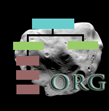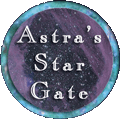
Near Earth Asteroids



There are many organizations that are involved in the Near Earth Asteroid field. The organizations listed below support observers and provide education and observing aids.
Discover how the Minor Planet Center acts as a single-point clearninghouse for international observations of Near Earth Asteroids and other objects discoverd in the night sky. Learn how NASA supports the international efforts to detect NEAs and evaluate the hazards to our fair planet.
Quick Links
Use the + to navigate to the subject area on this page. Use the named link to navigate to the Organization.
The Minor Planet Center is the single worldwide location for receipt and distribution of positional measurements of minor planets and comets. The MPC is responsible for the identification, designation and orbit computation for these objects. The MPS maintains the master files of observations and orbits, track the discoverer of each object, and announce discoveries via electronic circulars and the web.
The MPC operates at the Smithsonian Astrophysical Observatory an official entity of the International Astronomical Union (IAU). This organization provides many observing tools that support NEO observations and observers.
MPC Publications:
Besides launching space probes and tracking small bodies, NASA also provides many services to NEO observers, researchers and educators.
In June 2013, NASA announced a Grand Challenge focused on detecting and characterizing asteroids to help deal with dangerous asteroids. NASA is asking for public engagement, open innovation and citizen science to work out solution to the PHA dilemma.
NASA has also announced a potential mission to select a small asteroid, capture and redirect it into a lunar orbit. The asteroid would then be visited by human asteroids launched into space with a new rocket. The mission is called the Asteroid Redirect Mission.
Both the Grand Challenge and the Asteroid Retrieval Mission are part of the NASA Asteroid Initiative. The asteroid initiative includes an observation campaign, orbital tracking, robotic components, the human elements, and enhanced focus on planetary defense.
NASA maintains the Solar System Dynamics page that offers a visualization application of NEO Orbit Diagrams.
The European Space Agency (ESA) is an international organisation with 20 Member States. Its mission is to shape the development of Europe's space capability and ensure that investment in space continues to deliver benefits to the citizens of Europe and the world. By coordinating the resources of its members, it can undertake programs and activities beyond the scope of the individual countries.
The European Space Agency (ESA) announced its Space Situational Awareness (SSA) initiative in September 2011. The ESA SSA/NEO program is managed by the NEO Coordination Centre. The blog On Orbit Watch is a community site for the SSA program.
The Spaceguard Foundation is an association aimed at the protection of the Earth environment against the bombardment of comets and asteroids.
Space Guard Central Core provides observers with tools to assist in the detection and observation of NEOs.
Tumbling Stone is scientific monthly publication about NEOs (Near Earth Objects), asteroids and comets, and the hazard of Earth impact. It contains articles by researchers about NEOs science. Topics covered include comets, asteroids and their orbital and physical characteristics, meteors, meteorites, craters, impacts, space missions to NEOs, and more.
The Planetary Society, was founded in 1980 by Carl Sagan, Bruce Murray, and Louis Friedman, to inspire and involve the public in space exploration through advocacy, projects, and education. The society maintains a Asteroids and Comets website with information on NEAs and similar topics
Planetary Society NEA Projects
Laser Bees - Deflecting dangerous rocks with laser
Shoemaker Near-Earth Object Grant Program
- A grant program for amateur observers, observers in developing countries, and professional astronomers to assist with NEO research.
Asteroid Telescope First Light - Read how an NEO grant is being put to use to verify orbits of newly discovered objects.
This page was updated by Dawn Jenkins, June 27, 2022.